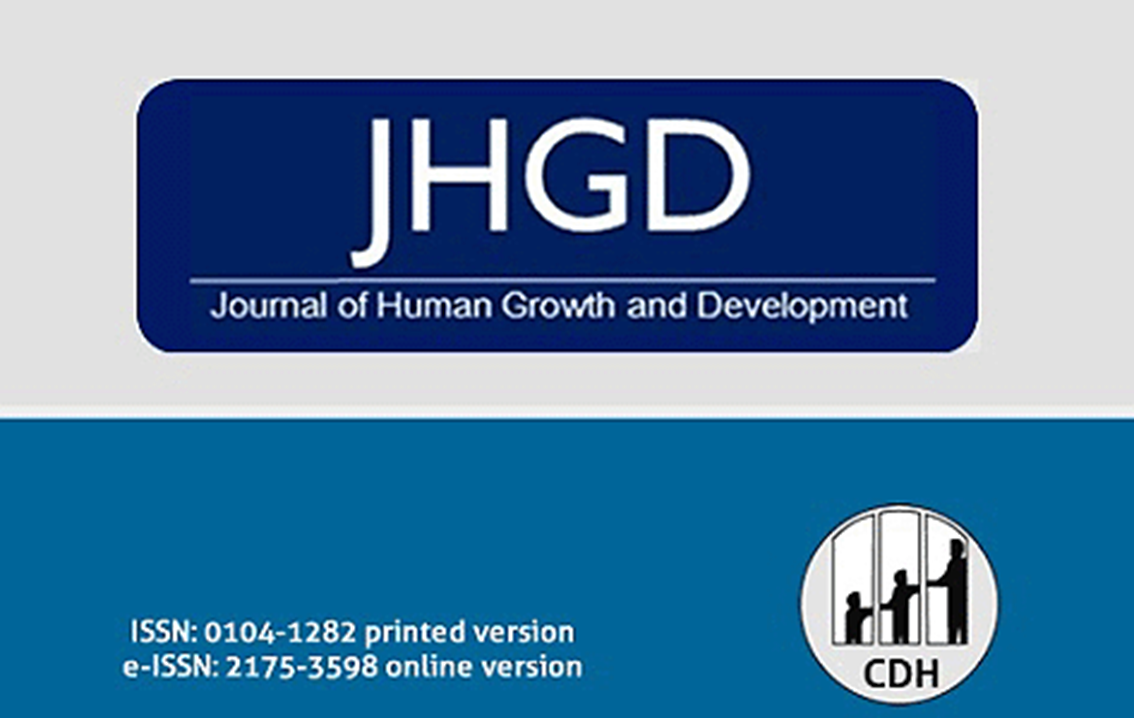Neonatal mortality in Luanda, Angola: what can be done to reduce it?
DOI:
https://doi.org/10.7322/jhgd.v29.9415Keywords:
neonatal death, low birth weight newborn, maternal ageAbstract
Introduction: One of the main health indicators is infant mortality rate, which is a metric of living conditions and population development. The goal of reducing neonatal mortality requires an adequate knowledge of the real factors at each level of health care so that maternal and human resources are efficiently channeled to the constraint. Countries that have paid special attention to improving health services for the entire pregnancy-puerperal cycle have attained the reduction of infant mortality, especially early neonatal mortality. Objective: The present study aims to describe the profile and analyze the risk factors associated with neonatal mortality in the Angolan context at a tertiary level public maternity hospital, located in Luanda. Methods: This is a retrospective cross-sectional study with a quantitative approach, using secondary data, of provincial base in hospital and ministerial registry instruments from January to December 2012. Results: The results show that the neonatal deaths are not mere occurrences, since they indicate failures of the political powers, professionals of the health system and of the families. Conclusions: This study suggests that the major risk factor for birth mortality in Luanda is the type of delivery (c-section) and that this data is not related to the age of the mother or to premature birth. We also found that there was higher mortality between May and July, during the period of lower rainfall index in the region. However, further studies are needed that may provide a logical framework and arguments for realistic policies to mitigate neonatal mortality.
Downloads
References
2. Soares ES, Menezes GMS. Fatores associados à mortalidade neonatal precoce: análise de situação no nível local. Epidemiol Serv Saúde. 2010;19(1):51-60. DOI: http://dx.doi.org/10.5123/S1679-49742010000100007
3. Guerrera G. Neonatal and pediatric healthcare worldwide: A report from UNICEF. Clin Chim Acta. 2015; 451(Pt A):4-8. DOI: http://doi.org/10.1016/j.cca.2015.03.004
4. United Nations Children’s Fund (UNICEF). Situação Mundial da Infância 2008: sobrevivência infantil. [cited 2017 May 04]. Available from: http://www.crianca.mppr.mp.br/arquivos/File/publi/unicef_sowc/sit_mund_inf_
2008_sobrevivencia.pdf.
5. World Health Organization (WHO). Infant mortality: Situation and trends. [cited 2017 March 31]. Available from: http://www.who.int/gho/child_health/mortality/neonatal_infant_text/en/.
6. United Nations Children’s Fund (UNICEF). Committing to child survival: a promise renewed. Progress report, 2014. [cited 2014 Aug 25]. Available from: http://passthrough.fw-notify.net/download/561427/http://files.unic ef.org/publications/files/APR_2014_web_15Sept14.pdf.
7. Schoeps D, Almeida MF, Alencar GP, França Jr I, Novaes HMD, Siqueira AAF, et al. Fatores de risco para mortalidade neonatal precoce. Rev Saúde Pública. 2007;41(6):1013-22. DOI: http://dx.doi.org/10.1590/S0034-89102007000600017
8. Bernabé JV, Soriano T, Albaladejo R, Juarranz M, Calle ME, Mart??nez D, et al. Risk factors for low birth weight: a review. Eur J Obstet Gynecol Reprod Biol. 2004;116(1):3-15. DOI: http://doi.org/10.1016/j.ejogrb.2004.03.007
9. Instituto Nacuional de Estatística (INE): Resultados definitivos do recenseamento geral da população e da habitação de Angola. Censo 2014. [cited 2017 Feb 21]. Available from: http://www.info-angola.com/index.php?option=com_content&view=article&id=4654: resultados-definitivos-do-censo-2014&catid=736&Itemid=1816.
10. Instituto Nacional de Estatística (INE). Ministério da Saúde (MINSA). Ministério do Planeamento e do Desenvolvimento Territorial (MINPLAN) e ICF International. Inquérito de Indicadores Múltiplos e de Saúde em Angola 2015-2016. [cited 2017 Feb 21]. Available from: https://dhsprogram.com/pubs/pdf/PR76/PR76.pdf.
11. Zangirolami-Raimundo J, Echeimberg JO, Leone C. Research methodology topics: Cross-sectional studies. J Hum Growth Dev. 2018; 28(3):356-60. DOI: http://dx.doi.org/10.7322/jhgd.152198
12. Fottrell E, Osrin D, Alcock G, Azad K, Bapat U, Beard J, et al. Cause-specific neonatal mortality: analysis of 3772 neonatal deaths in Nepal, Bangladesh, Malawi and India. Arch Dis Child Fetal Neonatal Ed. 2015;100:F439-447. DOI: http://dx.doi.org/10.1136/archdischild-2014-307636
13. Ribeiro AM, Guimarães MJ, Lima MC, Sarinho SW, Coutinho SB. Risk factors for neonatal mortality among children with low birth weight. Rev Saúde Pública. 2009;43(2):246-55. http://dx.doi.org/10.1590/S0034-89102009005000004
14. Abuqamar M, Coomans D, Louckx F. The impact of parental education on infant mortality in Gaza strip, Palestine. J Public Health Epidemiol. 2011;3(1):28-33.
15. Ribeiro FD, Ferrari RAP, Sant’Anna FL, Dalmas JC, Girotto E. Extremos de idade materna e mortalidade infantil: análise entre 2000 e 2009. Rev Paul Pediatr. 2014;32(4):381-8. DOI: http://dx.doi.org/10.1590/S0103-05822014000400015
16. Althabe F, Sosa C, Beliza´N JM, Gibbons L, Jacquerio ZF, Bergel E. Cesarean Section Rates and Maternal and Neonatal Mortality in Low-, Medium-, and High-Income Countries : an ecological study. Birth. 2006;33(4):270-7. DOI: http://doi.org/10.1111/j.1523-536X.2006.00118.x
17. Lansky S, Friche AAL, Silva AAM, Campos D, Bittencourt SDA, Carvalho ML, et al. Pesquisa Nascer no Brasil: perfil da mortalidade neonatal e avaliação da assistência à gestante e ao recém-nascido. Cad Saúde Pública. 2014;30(Supl 1):S192-207. DOI: http://dx.doi.org/10.1590/0102-311X00133213
18. Li F, Wu T, Lei X, Zhang H, Mao M, Zhang J. The apgar score and infant mortality. PloS One. 2013;8(7):e69072. DOI: http://doi.org/10.1371/journal.pone.0069072
19. Andrade KFS, Bringel AL, Frois JC, Pereira MA, Cruz SS, Oliveira TT. Mortalidade infantil no município de Feira de Santana, Bahia. Sanare. 2015;14(Supl 1):153.
20. Ceccon RF, Bueno ALM, Hesler LZ, Kirsten KS, Portes VM , Viecili PRV. Mortalidade infantil e Saúde da Família nas unidades da Federação brasileira, 1998-2008. Cad Saúde Coletiva. 2014;22(2):177-83. DOI: http://dx.doi.org/10.1590/1414-462X201400020011
21. Jobim R, Aerts D. Mortalidade infantil evitável e factores associados em Porto Alegre, Rio Grande do Sul, Brasil, 2000-2003. Cad Saúde Colet. 2008;24(1):179-87. DOI: http://dx.doi.org/10.1590/S0102-311X2008000100018
22. Nobre LC, Victora CG, Barros FC, Lombardi C, Teixeira AMB, Fuchs SC. Avaliação da qualidade da informação sobre a causa básica de óbitos infantis no Rio Grande do Sul (Brasil). Rev Saúde Pública. 1989;23(3):207-13. DOI: http://dx.doi.org/10.1590/S0034-89101989000300005






